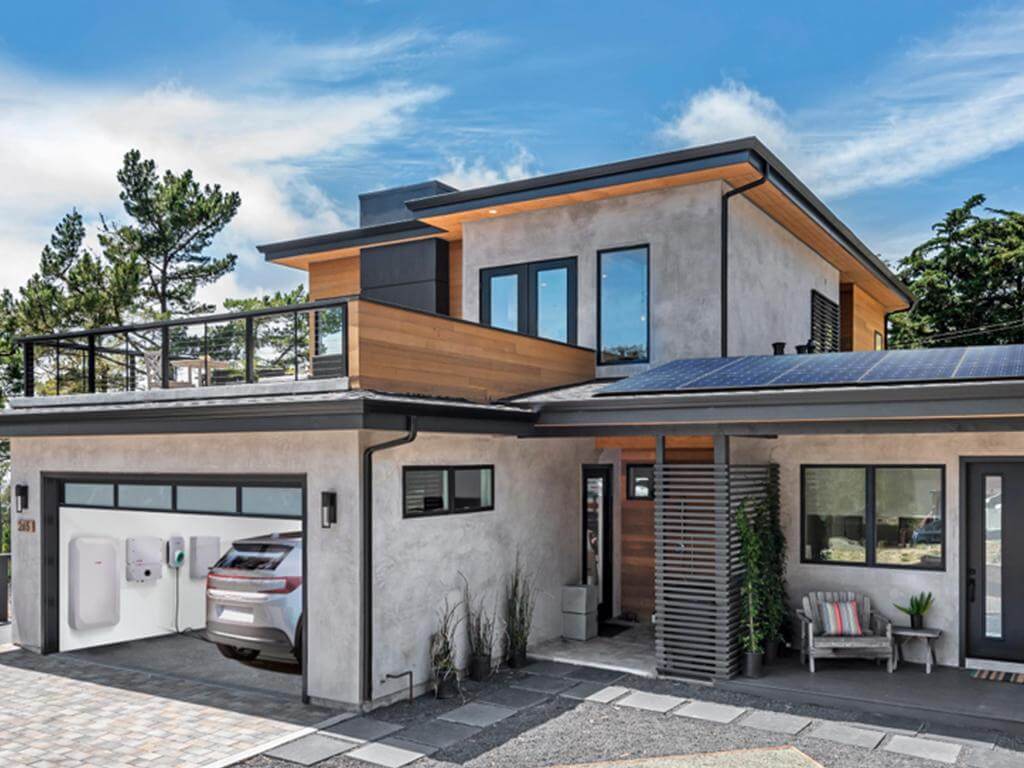Save on Residential Battery Installs with More kWs per String
Part 2: Uninterrupted Profit—SolarEdge Energy Bank
In our second post in this series, we further explain why installing our award-winning SolarEdge Energy Hub inverter along with our new residential battery, SolarEdge Energy Bank, can be less costly for your business. Our DC-coupled design allows for more solar modules, or kWs, per string, enabling you to reduce strings per site – as well as main panel upgrades (MPUs) – and save up to thousands on all PV+storage installs.
Are You Hitting the ‘Wattage Wall?’
The demand for residential battery is on the rise, which means more complex and costly installations. Profiting, it seems, isn’t so simple.
If you’re currently installing legacy AC-coupled solutions, this trend may be especially working against you, as that technology can limit the number and size of modules, or kWs, per 20A string.
To support the level of power required by a homeowner with PV AND battery, you might find yourself spending hundreds on more strings and breakers. Even worse—with most homes lacking a spacious main panel, you may need tack on an additional $3K-$4K in time-consuming MPU work.
When costs rise and profits fall, you’ve hit the ‘wattage wall.’
Not only are you potentially losing out on serious revenue, but you could lose some customers, as well. Weeks of delays and costly, invasive construction associated with MPUs could easily lead to prospects jumping ship simply to avoid the headache.
Improve Your Margins with More Modules
Unlike legacy AC-coupled technology, SolarEdge’s DC-coupled home platform is powerful enough to handle more modules per string, thanks to a central, DC-optimized inverter. And, because all our connections occur behind the main panel (not directly), we allow you to *oversize up to 200%, while traditional systems are limited to 120%.
*What’s oversizing? Click here to find out.
As a result, you can simply add more modules, or more kWs, per string and reduce strings per site—that means fewer MPUs and up to thousands more in your pocket for every Energy Hub+Energy Bank install.


Example Scenario
When installing 375W modules in conjunction with a 40A main panel breaker, legacy AC-coupled technology will usually only allow 13 modules per 20A string, for a total of 9.75kW (or two strings). In order to provide a home with both PV and battery, another 20A string would need to be added, and in this case, an MPU would be required.
With our DC-coupled solution, modules per 20A string is not a limiting factor. Four more panels can be installed along with our standard, 11.4kW inverter, giving your customer 11.25kw, or roughly 15% more power, from the same breaker. That means you can add on battery or EV charging without the need for an MPU.
Bottom line? DC-coupling means more power for homeowners, and more profit for installers.
Are you ready to increase power and profits with an award-winning solar & battery solution? Click to learn more about SolarEdge Energy Bank and SolarEdge Energy Hub.
In our third Energy Bank blog post, we’ll show you how to turn on customer confidence with our new app feature, Weather Guard, which automatically and fully charges home batteries before the storm hits.
Power On,
SolarEdge